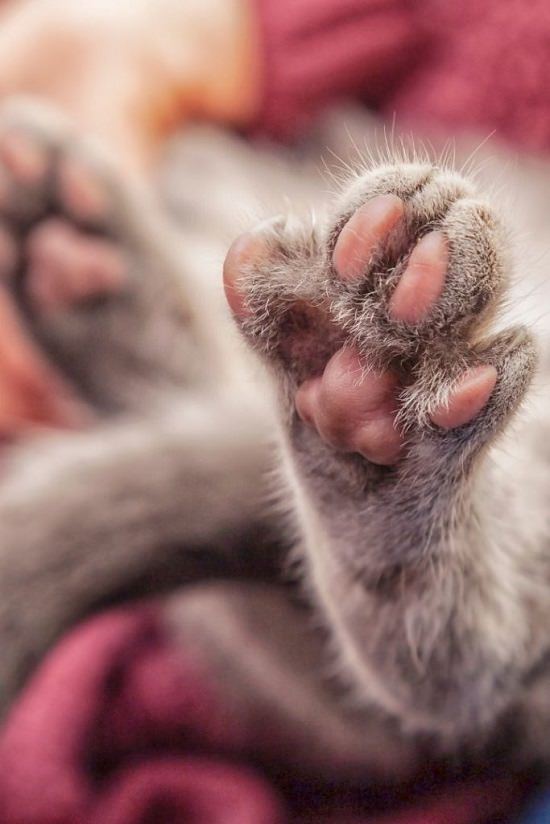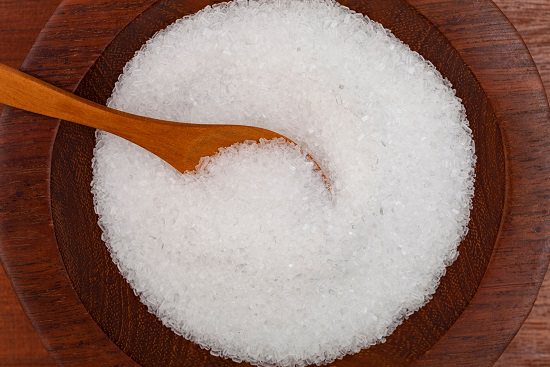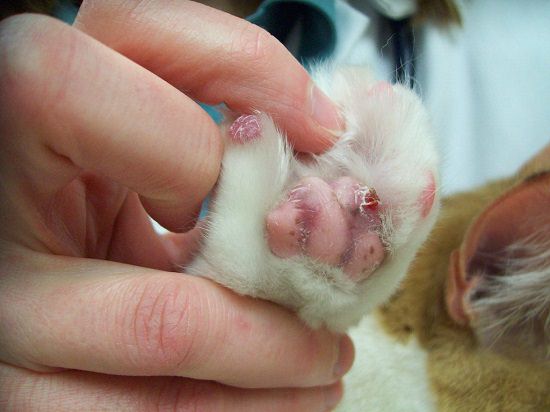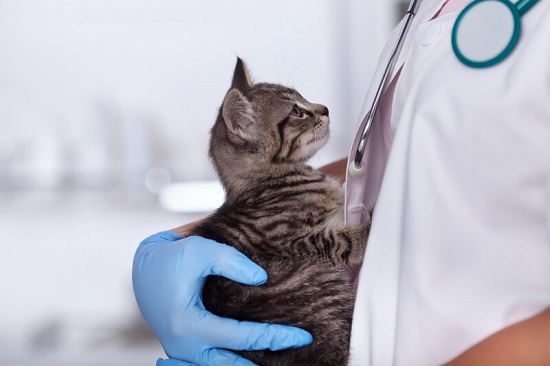Let’s discuss pododermatitis in cats, an auto-immune disorder that’s not just unsightly but painful as well.
Pododermatitis in Cats
Feline plasma cell pododermatitis, commonly called ‘pillow foot,’ is a rare inflammatory condition of the footpads of a cat. It generally affects one or all paws of the cat and affects both male and female cats of any age or breed equally. The condition develops when fully matured white blood cells, also called plasma cells, get produced excess as the immune system is mistakenly triggered. The plasma cells accumulate in the cat’s footpads and are attacked by the antibodies developed in the blood. This leads to swelling and pain. Learn about pododermatitis in cats by reading this article focused on the topic.
Causes and Symptoms
The autoimmune disorder could be a possible cause. The triggers for the condition can include stress, environmental toxins, food allergens, or vaccines. It is a progressive disease, and if left untreated, it could lead to other secondary infections and inflammatory autoimmune conditions. In some cases, the disease clears up spontaneously, and in some cats, lifelong treatment is required.
In initial or mild cases, cats continue to be asymptomatic. As the condition progresses, symptoms include:
- Swollen
- Spongy textured footpads
- Scaly pads
- Bruising or purple discoloration in the footpads
- White striations on the affected pads
- Footpad tenderness, lameness, splitting of the footpad
- Cat licking and chewing the paws
- Bleeding from the paws
- Anorexia
- Lethargy.
In some cases, IBD, stomatitis, and renal complications can also be present. A vet easily diagnoses the condition by a physical exam. Blood tests can also confirm the diagnosis and the increased volume of white blood cells in the tests.
Home Remedies for Pillow Foot in Cats
Diet plays an important role in managing pododermatitis in cats. A low carbohydrate diet with anti-inflammatory foods helps modulate and balance your cat’s immune system. Sustaining them on a high protein, hypoallergenic diet helps control the disease. Simultaneously, vitamin supplements will help as well.
1. Epsom Salt
Add two tablespoons of Epsom salt to lukewarm water in a wide basin and soak your cat’s infected paw or paws in it for 10 minutes daily. Epsom salt has anti-inflammatory properties, besides it improves blood circulation, acts as a detoxifier, and helps reduce pain. It is also an antibacterial which will help fight infection.
2. Aloe Vera
Use gloves and apply fresh Aloe Vera gel on the affected paw. Allow it to dry before letting your catwalk around. Aloe Vera’s anti-inflammatory and healing properties will ease the swelling and pain, but it will take time and regular application to show results.
3. Apple Cider Vinegar
Mix 1 cup of apple cider vinegar in a gallon of water and soak your cat’s paw in it for about 20 seconds. Remove the paw and allow it to dry naturally. Apple cider vinegar also has anti-inflammatory and antibacterial properties, which will help reduce inflammation and fight infection.
4. Immune Modulating Supplements
Immune modulating supplements help lower inflammation and prevent flare-ups. Home remedies also include homeopathic remedies like NotaSan, which relieve allergy symptoms like inflammation and infection.
Quentin is another homeopathic liquid medicine that fights viruses and infections, especially in the upper respiratory tract. Silver immune support is a broad-spectrum germ killer and a safe supplement to use.
Power Probiotic is a multi-strain natural probiotic for pets. Since a cat’s immune system lies in the intestinal tract, probiotics help by modulating and supporting the immune system.
When to See a Vet
Home remedies work only in cases where the condition and symptoms are mild. If you see that the condition is getting worse and if your cat is displaying signs of distress and pain, then get them treated by a vet.
Medical treatments include topical medications like shampoo washes, foot soaks and wipes to treat secondary bacterial and fungal infections. Vets can also prescribe oral medication in severe cases.
Other treatments depending on the underlying cause can include steroids and antibiotics to reduce inflammation and treat the infection. Cyclosporine or Doxycycline is also prescribed to modulate the immune system, and if these drugs don’t work, surgical removal of the affected paws is the last resort.
How to Prevent
Prevention involves providing your cat a healthy diet, regular examination of your cat’s paws, and being alert to any change in your cat’s behavior. Keep your cat’s litter clean and disinfect its bedding regularly. Maintain regular and proper hygeince of your cat’s paws. Use hypoallergenic cleaning products on the floor.




